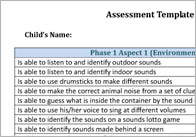What is the goal of risk assessment? There are quite a few potential goals of a risk assessment. IT organizations can have prioritized IT assets and data assets based on different measurements criteria—asset.

The specific goals will vary greatly depending on the type of risk that is being assessed. The main objective of risk assessment is to determine the measures required by the organization to comply with the relevant health and safety legislation an thereby , decrease the level of the occupational injuries and the ill health. The purpose of a risk assessment is to ensure that a workplace is safe to work in and all individuals involved are appropriately protected from hazards.
The process of a risk assessment involves firstly identifying hazards within a work place, and then subsequently implementing control measures. A risk assessment usually involves incomplete data, scientific uncertainty, and the need for expert judgment. The pressure to narrow the scope becomes a pressure to give inadequate attention to those complications.
The aim of the risk assessment process is to evaluate hazards , then remove that hazard or minimize the level of its risk by adding control measures , as necessary. By doing so, you have created a safer and healthier workplace. Assessing risk is just one part. Risk assessment template and examples Template. You can use a risk assessment template to help you keep a simple record of:.
This generic risk assessment identifies the common hazards and control measures associated with this type of activity. WHAT IS THE GOAL OF A RISK ASSESSMENT? A well-managed organization makes a holistic assessment of the risks it faces now and in the future, taking into account the needs of a broad range of external and internal stakeholders.
It then designs appropriate risk management and control mechanisms to handle these. Essentially, the goal of risk management is to identify potential problems before they occur and have a plan for addressing them. Risk management looks at internal and external risks that could negatively impact an organization. Typically, risk management teams break their risk management plans down into four parts. Other goals include: Providing an analysis of possible threats Preventing injuries or illnesses Meeting legal requirements Creating awareness about hazards and risk Creating an accurate inventory of available assets Justifying the costs of managing risks Determining the budget to remediate risks.
This assessment should be part of an individualize multifactorial intervention. Is the area fit and appropriate for activity? Please outline the hazard. Infection control risk assessment.

An infection control risk assessment must be carried out to assess infection hazards and risks and ensure that, where possible, infection risks are eliminate reduce contained and managed appropriately. The infection control risk assessment will identify particular tasks that may carry the risk of. Commissioners (clinical commissioning groups and NHS England) ensure that they commission critical care services which use a comprehensive clinical assessment to identify adults at risk of morbidity and establish their rehabilitation goals.
They monitor the providers to ensure that this is done within days of critical care admission or before discharge from critical care, whichever is sooner, reviewed and updated throughout rehabilitation. Whilst the purpose of risk assessment includes the prevention of occupational risks, and this should always be the goal , it will not always be achievable in practice. Where elimination of risks is not possible, the risks should be reduced and the residual risk controlled. The plan incorporates specific therapeutic strategies and is a collaborative, interactive and dynamic process rather than something that is ‘done to’ the person. Accident rates are lower where employees genuinely feel they have a say in HS matters (), compared with workplaces where employees don’t get involved ().
Manual handling risk assessments : When employees need to carry, lift, or move loads, then this assessment determines potential injury or health risks from the activities. The purpose of risk assessments is the prevention of injury and ill health among the workforce and others who might be affected. Consequently, putting into place any measures indicated by the risk assessment is of key importance and can only happen effectively if leadership by senior managers and directors is shown. Step 1: Identify the hazards.
The first step in a risk assessment is to identify any potential hazards that, if they. After the hazards are identifie the next step is to determine which. It focuses on risk assessment process and criteria, impact and probability and the practice of qualitative and quantitative methods for the assessment , categorization and prioritization of risk.

Identify and consider risks for your site, and the sources of the risks.
No comments:
Post a Comment
Note: only a member of this blog may post a comment.